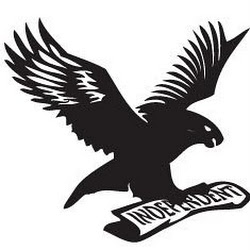5000 mile project: To the end of the earth, in the footsteps of puma & the lost people of Magellan
These first few days of our year-long 5000 mile project run of South America represent some of the most remote and hostile. Southern beech woods topple onto jagged, wave-cut platforms and “bandera” trees bend their resolve to the furious Southern winds. Below all of this lies the fabled Magellan Straight. This wild world at the bottom of the earth along with its threatened South American “cousins”; the rainforests, wetlands and grasslands of this mighty continent, are the reason we are running.
We´re going “mountain marathon style” for this stretch; i.e. as light and as quick as possible. We´re carrying one small rucksack each, stuffed with enough kit to maintain a semblance of warmth in Patagonian winter conditions and some meagre dry food supplies. Snow is under foot, ice splits the rivers and another storm with screaming winds is forecast.
Only the very tops of the stunted Guaitecas cypress nose out of the snow. It´s amazing that these trees can survive in such conditions; seemingly buried alive. That they and the evergreen southern beech in the quiet lichen-covered hangers below have evolved to perfectly flourish here is extraordinary.
At times the snow is waste deep and each step drags huge quantities of our diminishing energy. A deer´s hoof prints (likely the endangered Chilean huemul) appear to be going our way. The hind’s hoof has barely indented into the soft snow. I compare this to the laboured trenches we are excavating and it is no wonder we have only a four day stay planned, we cannot compete.
Further tracks reveal the other silent residents, whose forest, mountain and coastline home we´re trespassing through. Two sets of huge paw prints in the beach-side snow can only mark the passage of a puma. He was no doubt prospecting for an easy meal washed up on the strand-line. Although not threatened, this large cat species is declining as its habitat diminishes and conflicts with stock and people increase.
Next a line of “chungungo” or sea otter prints. The last time we saw this charismatic, endangered species, further north in the Chilean channels, he was carefully excavating the prickly flesh of a sea urchin in his paws, lying nonchalantly on his back!
Again and again we thud to the ground, incapable of gripping the slimy boulders and crags that mark our shore-side passage. Yet by our sides dark-bellied cinclodes; small dusky looking birds, effortlessly snatch flies and rock pool morsels.
Then we see it. The river. I have been dreading this crossing for weeks. Snow blankets its sides. The thermometer measures 1°C. David plunges in, rapid strokes and he bursts out and fumbles into his clothes. We ferry the kit across by rope, delaying my passage. My fingers and feet are already lost. I strip, there’s no choice. Knee deep, waste deep and I’m swimming in its freezing clutches. It’s taking for ever. Snow and wind claws at my hair, I’m slowing down. David is calling. I clamber out. That was hideous.
It’s becoming abundantly clear how poorly suited we three bungling apes are in these frosted lands. Yet all around us other animals and plants are perfectly adapted. We lack the blubber of the Peale’s dolphin, the down of the kelp goose, the nose of the culpeo (Patagonian fox), the sight of the Andean condor; the water resistant pelt of the chungungo. Stripped of our urban sophistication we are nothing. But this has not always been the case.
Less than one hundred years ago, people stalked guanaco in the Patagonian Steppe and gathered shellfish in the fjords from their dug-out canoes. They would have collected berries, wild celery and fungi from the very woods we are passing through. These hunter gatherer people: the Selk’nams, Yaghans, Alacalufs and Chonos, could exist in conditions the average 21st century Homo sapien would wilt at!
As we walk through this mystical landscape, increasingly threatened by logging, development, pollution, over-fishing etc. it is tragic to think of these resilient people hunted by the new settlers, ex-sponged by illnesses and lost forever.
But now as the snow-capped mountains recede behind us and the icy grip of the river is but a memory, it is amazing to think that the very same habitats that those fabled tribes dwelt amongst still exist. That our footsteps fell where theirs had been. That both our footsteps fall in the shadows of the same wild animals and plants that form this living museum.
A living museum that we must conserve. As we strap into our trailer and begin the long run north, our heads our filled with the visions of this extraordinary wilderness. We cannot lose it as we have its people.
Tagged in: 5000 mile project, amazon, South America
Recent Posts on Notebook
- The Race2Recovery blog: Man and machine in charge of nature
- How Clean is Your Air?
- 5000 Mile Project: Stop Bugging Me! Or is it time to reconsider our relationship with insects?
- Barking Blondes: Snow can be the greatest fun or total nightmare for dogs
- Take a free ride on the London Eye in exchange for your best shot of the capital
